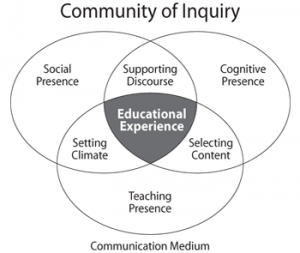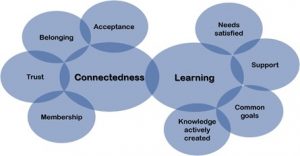Ten Facts You Need to Know About Blended Learning
1 Getting Started
Why Should I Consider Switching to Blended Learning?
You should consider switching to blended learning if you would like to increase student engagement and enhance student learning. One of the main reasons why blended learning works is that it offers flexibility in terms of when and where learning activities take place. Having the ability to self-pace rather than be constrained by a dictated schedule is important to many students. Blended learning also works because it takes advantage of “prime time” – the time when each of us is at our maximum cognitive capacity. This varies across individuals; therefore, by allowing self-scheduling, learning is more likely to occur than if a student is sitting in a classroom at a time when they are half-asleep. The combination of these two factors increases the probability that students will engage with the required materials and stay up to date. Finally, online learning activities allow for greater use of a wider range of media, both static and interactive, such as games, interactive videos, and so on, which engage and enhance learning.
These guidelines are supported by two established conceptual frameworks: the Community of Inquiry model (Garrison, Anderson, & Archer, 2000) and the Classroom Community model (Rovai, 2002). Each has an established literature that you can consult to answer questions that you may have as you design your course.
In Appendix 2, you will find a one-page summary of the Community of Inquiry model from the University of Toronto and if you require more information, the University of Athabasca hosts a comprehensive website about the COI model (https://coi.athabascau.ca/coi-model/).
Full PDF text:
http://cde.athabascau.ca/coi_site/documents/Garrison_Anderson_Archer_Critical_Inquiry_model.pdf


The Classroom Community model (Rovai, 2002) outlines a similar but slightly different path, by delineating two types of community – social and learning, with the component parts illustrated above. From these two models, you can see that there are a number of areas in which you may need to change how you provide information, provide support, create feelings of membership and acceptance, foster common goals and so on to bridge the distance. For instance, having students post introductions online prior to or just after group formation can provide trust-building information. Both models have established measures that you can use as pre-tests and post-tests to empirically evaluate the change(s) that you have made. Doing so can lead to Scholarship of Teaching and Learning (SOTL) publications in reputable SOTL journals.
Ten Facts You Need to Know About Blended Learning:
1. Blended learning is more than just learning in the classroom and online
2. Students perform well in blended courses
3. Students prefer learning in blended courses
4. Interaction is key to successful blended learning
5. Blended learning provides students with flexibility in their schedules
6. Blended learning may be more successfully implemented in STEM courses
7. The proportion of time spent online in a blended course affects outcomes
8. First-year students do not appear to benefit from blended learning as much as those in upper years
9. Faculty tend to like teaching in blended courses
10. Institutions may better utilize space and avoid increased costs with blended learning
Find out more at:
https://teachonline.ca/sites/default/files/tools-trends/downloads/ten_facts_you_need_to_know_about_blended_learning.pdf

